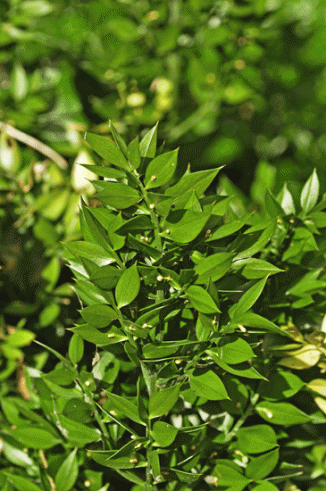Butcher’s-broom is an evergreen shrub that usually grows to about 1 metre or so in height. It has really small flowers (5mm) and these are pale greeny-yellow and star-like with 6 petals. The centre of the flower is purplish and the flowers grow on the upper surface of leaf-like cladodes which are modified, flattened, stiff stems, sharply-tipped, dark green & shiny. The flowers are dioecious and they can be seen from January to April. The leaves are reduced to small, membranous papery scales. In autumn the fruit is a small red berry.
Butcher’s-broom is an introduced species and grows in dry woods, hedgerows and parkland. It mainly occurs in the north-east and south-east. It belongs to the Asparagus/Asparagaceae family.
I first saw this species many years ago in St Stephen’s Green in Dublin and I photographed it there in 2010.
If you are satisfied you have correctly identified this plant, please submit your sighting to the National Biodiversity Data Centre



